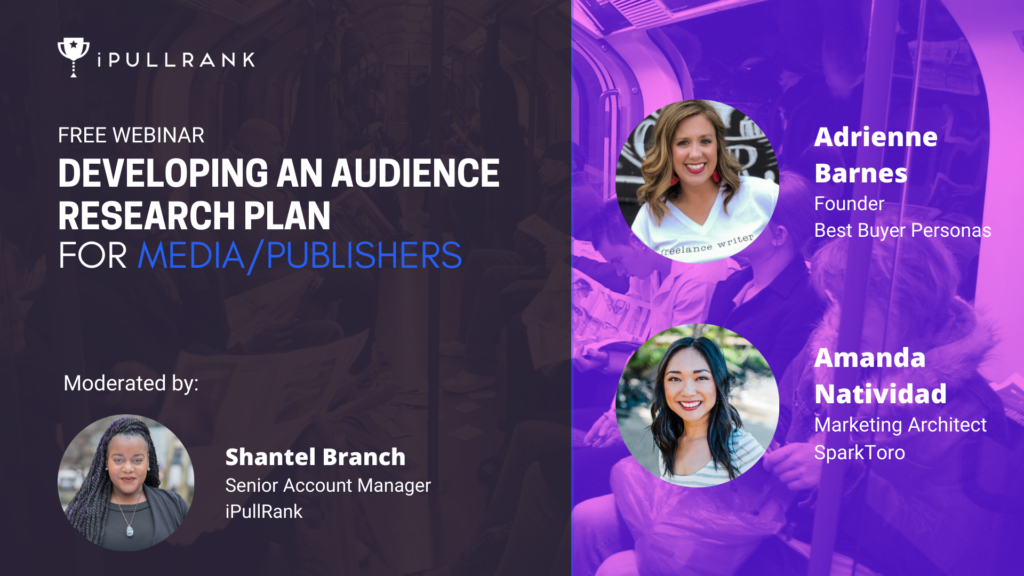In this webinar, Adrienne and Amanda will be sharing the nuts and bolts of developing audience research, specifically for media publishers. They’ll show you why it’s important, what to look for, the tools you can use to do it, and more.
Watch the replay here:
Here’s what we covered in this webinar:
- What is audience research? [2:21]
- How to make your content focused and actionable for your audience [5:23]
- Understanding why your audience behaves the way they do [7:41]
- Working with audience communities [9:10]
- Using audience research to identify your content focus [15:00]
- Why personas and audience research is important for publishers [20:48]
- Using audience research to avoid the echo chamber [27:13]
- Old school audience research tactics that still work [28:48]
- Finding influencers, getting them to work with you [33:10]
- What people get wrong about audience research [37:24]
- How audience research creates content strategy [43:38]
- Applying content research on social media [48:24]
What is audience research? [2:21]
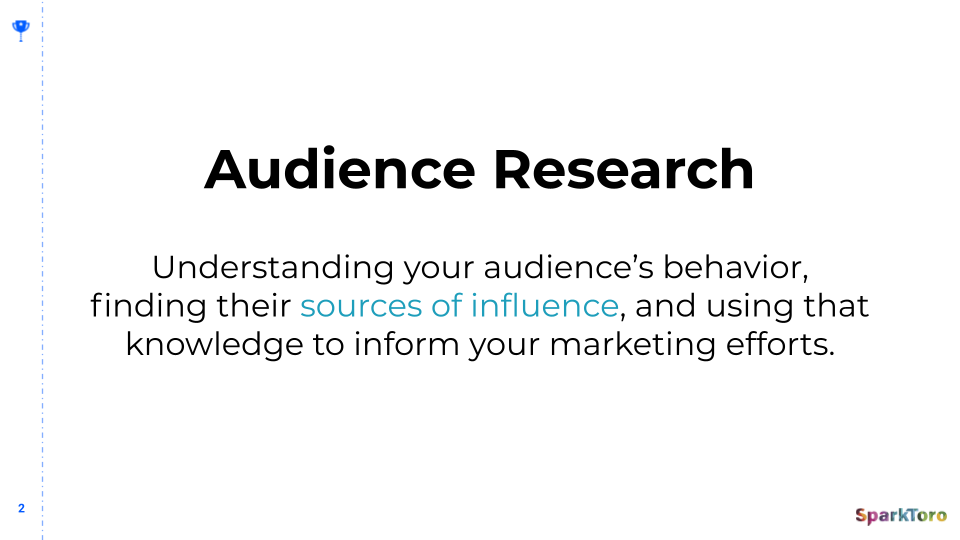
The savviest marketers are already using audience research, but it’s still a term that many people don’t fully understand. Audience research is understanding your audience’s behavior, finding their sources of influence, and using that knowledge to inform your marketing.
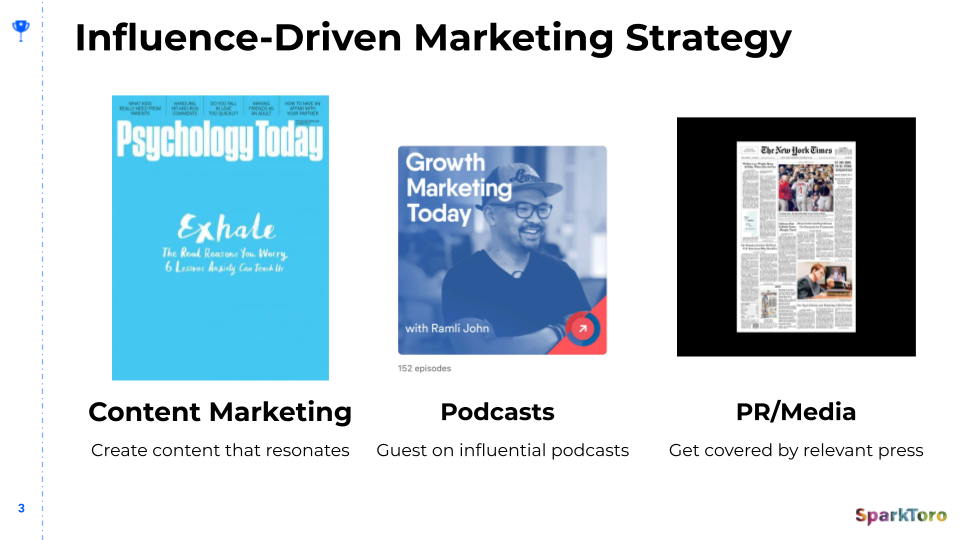
How to make your content focused and actionable for your audience [5:23]
Begin with the reader persona.
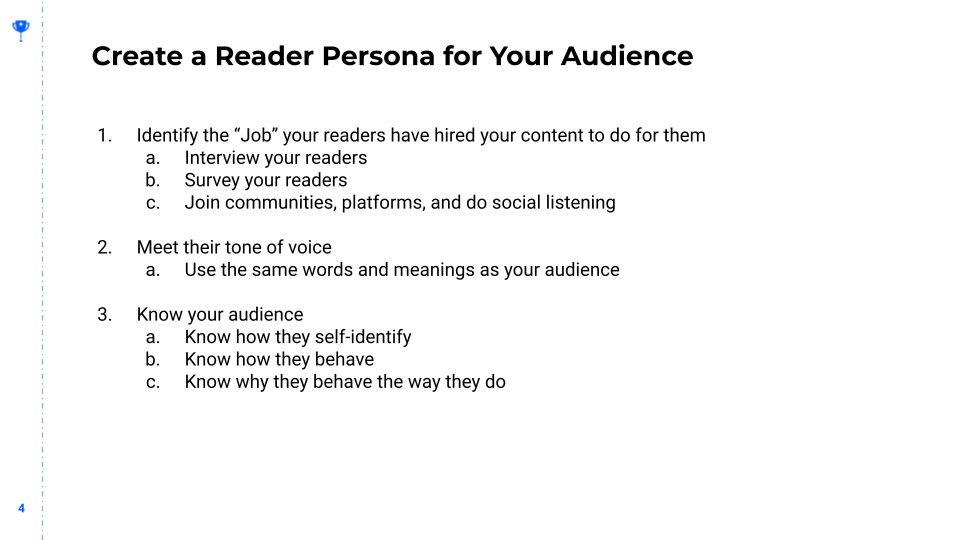
Start by asking questions about your reader; why is my audience reading what I create? Why do they come to us? What are they trying to accomplish? What is the reader’s intention when they click on a link or come to my blog post? What about when they’ve opened or downloaded an ebook?
What are they trying to achieve?
Always having that aspect in mind helps you ensure that what you’re creating isn’t just content for content’s sake. Good audience research provides your content with purpose, a job it’s designed to do.
Understanding why your audience behaves the way they do [7:41]
Your readers have hired your content to do a job for them. If you create a specific piece of content, it’s going to do X. This is going to entertain them, or this is going to inform them. As a media publishing company, there’s a reason you’re creating your content. And hopefully, that reason is beyond just clicks and dollars.
Working with audience communities [9:10]
When you find an audience community, it’s a good idea to join; figure out where they are and show up in those places. If you know your audience is part of a particular slack channel, that’s great. What’s not great is going to that Slack channel to spam links or show up in an inauthentic way. Instead, find out what kind of questions are they like having within these communities.
What kind of conversations are they having?
Using audience research to identify your content focus [15:00]
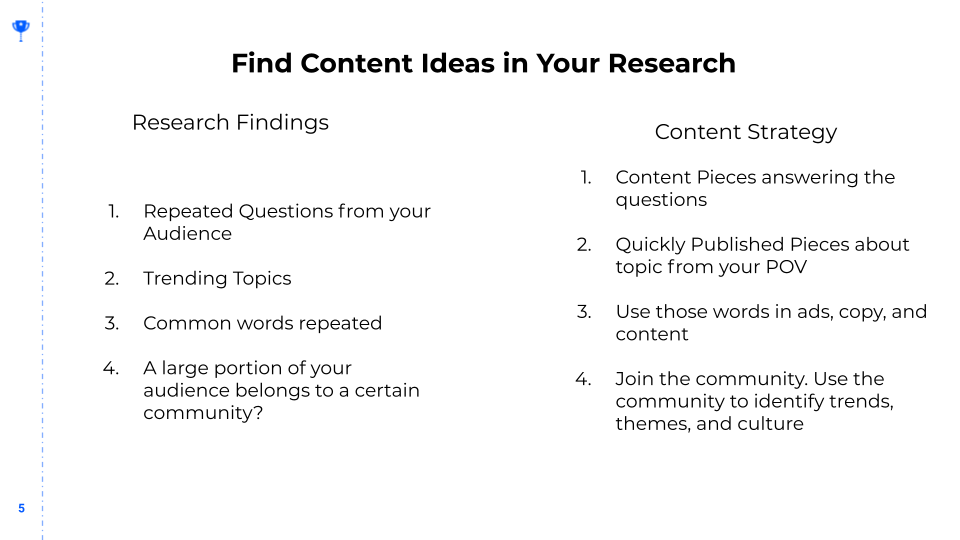
A lot of what I do in my audience research is I look for common words; what is repeated most often? What kind of stuff are people saying over and over and over again? It doesn’t matter if it’s negative, positive, or neutral; it could even be in response to the publication itself (i.e., your audience refers to you as a journal, magazine, or publication). Use those words in your content, your ads, and your copy. That’s just going to allow your audience to resonate and understand much quicker.
Why personas and audience research is important for publishers [20:48]
Audience research is important because it covers a more holistic view over time. If you’re in the media world and focused on breaking news, you’re working on hard-hitting stories. You probably don’t have a lot of time for true social listening. You don’t have time to be on Twitter or in a social monitoring tool all day. You’re busy creating content. It’s helpful to look at this more holistically as an overview to understand your overall audience versus just trying to chase after trends.
Using audience research to avoid the echo chamber [27:13]
One of the reasons to use audience research tools like SparkToro is that they help avoid the echo chamber. Using these tools enables you to focus on the best subject matter experts and thought leaders.
These tools answer crucial questions: Who are the influencers in our audience? Who are the people who are the subject matter experts? Who should you approach? If you’re going to write a piece about X, who’s the best person to interview? It’s really easy as a writer to get into our little bubbles and our main five or six experts; this is the kind of behavior that leads to an echo chamber.
Audience research gives you a unique point of view, a unique perspective, and unique pieces of content outside of the same standard, random people that everyone else is talking to as well.
Old school audience research tactics that still work [28:48]
The old-school tactic that still works is getting on the phone and talking to your buyers, your readers, and your customers; it was working in the thirties and forties when the idea of segmenting audiences started, and it’s still working today.
Finding influencers, getting them to work with you [33:10]
SparkToro is a helpful audience research tool you can use to find these influencers. SparkToro also has a list of free tools you can use to find and identify influencers.
Maybe there’s someone with a hundred thousand followers who doesn’t have a very engaged following, but maybe there’s another influencer with 10,000 followers and a ton of engagement. You might be better off going with the influencer with a 10,000 person following. Using SparkToro, you’ll see things like the average number of free tweets or likes and shares – those kinds of things. But what you’ll also notice is some of the related accounts.
Using SparkToro, you can go through some influencer profiles to see who they follow. You could analyze, for example, whether your audience frequently talks about mindfulness; if they do, what are some of the websites they frequent? What are some of the social accounts they follow? Maybe somebody who talks about mindfulness online also talks about meditation.
What people get wrong about audience research [37:24]
What people mostly do wrong is they assume it doesn’t work.
“Why waste time on that? I don’t want to do that. I’ll just create it. I know who my audience is. I’ve been doing this for 35 years. And you probably do have an idea, but most likely, you don’t know the subtle nuances involved, and you’re definitely not able to identify shifts before they happen.”
Here’s why people say audience research doesn’t work.
Either they don’t know how to do audience research, or they did it once, and it didn’t work. If you share that sentiment, is it because you probably didn’t do it right? Maybe the interviewer was defensive or didn’t ask the right questions. But now you have all this data; this data is just sitting on a CMO’s desk or in Google drive, and nobody’s using it. When we dig a little deeper and get to the core issue, we see that it’s fear.
How audience research creates content strategy [43:38]
Your content strategy comes from your internal messaging, which means you’ll need to ask the question: What do we need to create? What is the goal that we’re trying to do? What questions does your customer ask? What are their concerns and struggles?
Use that as a filter to guide and inform the content that you create. Hold on to your understanding of why your customers are coming to you.
If you’re the publisher of a science journal and your readers are doctors in need of immediate, evidence-based research, then that’s the kind of content you’re going to produce. You’re probably not going to be focused on the doctor’s best outfits last week.
Use audience research as a guide to reader intent.
Applying content research on social media [48:24]
With Facebook or Instagram, photos or graphics play really well, especially on Instagram. You can create a sort of slideshow on the grid. So, with your Instagram posts, you can repurpose some of the content into four to five slides. You can put that content into an Instagram story along with the link.
For Facebook, you can create a graphic text. You can also focus put captions under each image, so Facebook offers more real estate for your content.

About Shantel Branch, Account Manager at iPullRank
Shantel is a client management and a revenue-growth specialist at iPullRank with 12 years of experience in client services and account management.

About Amanda Natividad, Marketing Architect at SparkToro
Amanda is the marketing architect over at SparkToro, which is the audience research company. As the marketing architect, she sets the foundation for future marketing efforts and the overall product and customer experience.

About Adrienne Barnes, Founder of Best Buyer Persona
Adrienne is the founder of Best Buyer Persona; she conducts audience research and offers content strategies for B2B SaaS companies.
- The Cost of SEO Services in 2024 - January 4, 2024
- The 2024 SEO Guide To Successful Website Migration - April 4, 2023
- How Audience Research Shapes Financial Services Marketing - February 16, 2023
